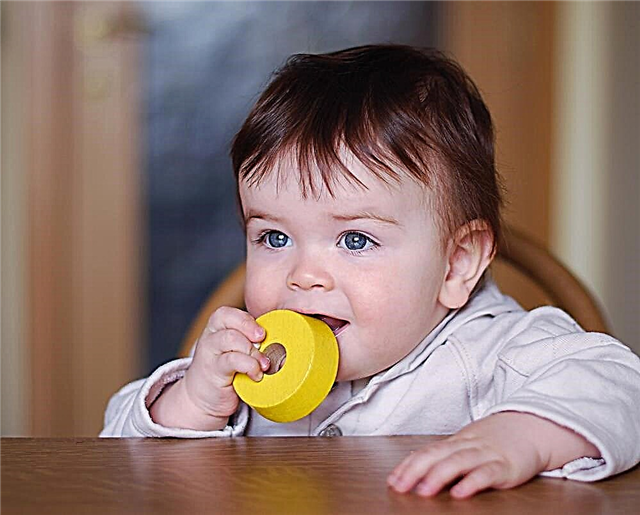
Preschool and primary school age is the time when children actively manifest their creativity and desire to create. They write stories, spend hours drawing, invent their own language. Creativity will come in handy in any profession, even the most distant from creativity, and, realizing this, parents are trying to pump the abilities of their child to the maximum. But comprehension of the world of arts does not always go as they suggest: the child, it turns out, does not instantly give out Mozart's sonatas and does not write abstractions by Picasso.
Here's how to deal with creative development and help the process.

We strive to understand the crumb: the differences in the perception of a child and an adult
Adults are accustomed to the fact that the most important thing is the result of their efforts. For children, things are a little different. The first time, when the baby consciously tries to create something, for example, a picture, he is so carried away by the process that as a result, a completely unattractive brown spot appears on the sheet.
This is due to the fact that the baby first needs to learn how his tools for creativity work.
He may become so interested in mixing colors that he will forget about the house he was asked to draw. Before getting worried about the shape of this house and the color of the curtains in the windows, the kid needs to understand how to get the “same” green shade. He needs to reconcile with how much water to mix the paint with, and to realize why there is a glass of water in front of him at all.

Of course, all this applies not only to drawing, but also to any other creativity. Having given the kid a xylophone, you will not immediately hear a coherent melody and will not even see a distinct interest in creating this melody. First, the little one needs to test how the tool works and study it more or less independently.
After all, creativity for children is primarily about research and discovery, and only then results. The desire to be proud of your creations comes a little later, when the basic processes have become very clear.
The best way to help you get past this stage and start creating is by not getting in the way. Give your child space and time, answer his questions if he asks them.
And when he proudly plays you his first improvisation and shows you the first brownish-brown lump painted with expensive gouache, control your facial expressions and show interest in creation. Ask him what colors he interfered with and why, on which bars in the xylophone he most often knocked. Give an impulse to his curiosity, and over time, the result of efforts will begin to excite the baby more and more, and you will more and more delight.

We stimulate the emergence of ideas
Another question that arises before parents is the secondary nature of the child's creations. The desire to draw the same cartoon characters, "composing" a story that he just heard from his parents, but with changed names, endless identical coloring - all this seems to say that the crumbs have no ideas of their own. As if he is not a creative person at all. All such experiences of moms and dads are understandable, but in vain.
After all, in order to create something unique, you first need to go through the stage of imitation. By the way, this applies not only to children, but also to adult artists, musicians, writers ... It is imitation that helps shape your own vision. Gradually, the baby will go beyond what he has already seen or heard, and he himself will generate ideas.

To help him start creating his own masterpieces, first help him with the creation of "fanfiction": ask to recreate the most favorite picture or comic strip, come up with adventures for the heroes of a fairy tale or cartoon.
Besides, it is necessary to develop imaginative thinking in general. And here it is important to act not only within the framework of the chosen drawing or music. A wide variety of games and activities will help to work on the imagination: from discussing the shapes of clouds to puppet tea parties. It pumps up imagination and design well - an occupation that is often credited with developing exclusively mathematical skills.


Useful shopping
In fact, assembling bright figures, not limited by certain rules, will help the child to realize his abilities and to fantasize more. This process is interesting to combine with role-playing games. For example, for little fans of classic fairy-tale cartoons from six years old, a constructor is suitable Lego® Disney ™ "Cinderella's Magic Castle" (art. 41154). While the young princess is assembling a beautiful palace, she can come up with new adventures for Cinderella and her friends, and at the same time feel like a royal person. Ask which of the rooms the heroine will sleep in, what she will do all day, where the horse will live, where they will go with the prince. Let the child continue his favorite fairy tale and tell what is the "happily ever after" that ended the famous story.


It is important not to limit children and not say that this does not actually happen and in fact everything would be different. Better ask why the little girl decided that the princess and the prince would open an animal shelter in their castle.
By asking the questions "why?", "Why?", "How?"
At the same time, it is already important for children at an early school age to provide personal space. Participate in the process, but allow your toddler to spend some time alone with his creativity - coming up with lines to characters, drawing rainbows and banging on the xylophone.

For information on which games can be used to develop a child's creativity, see the next video.



